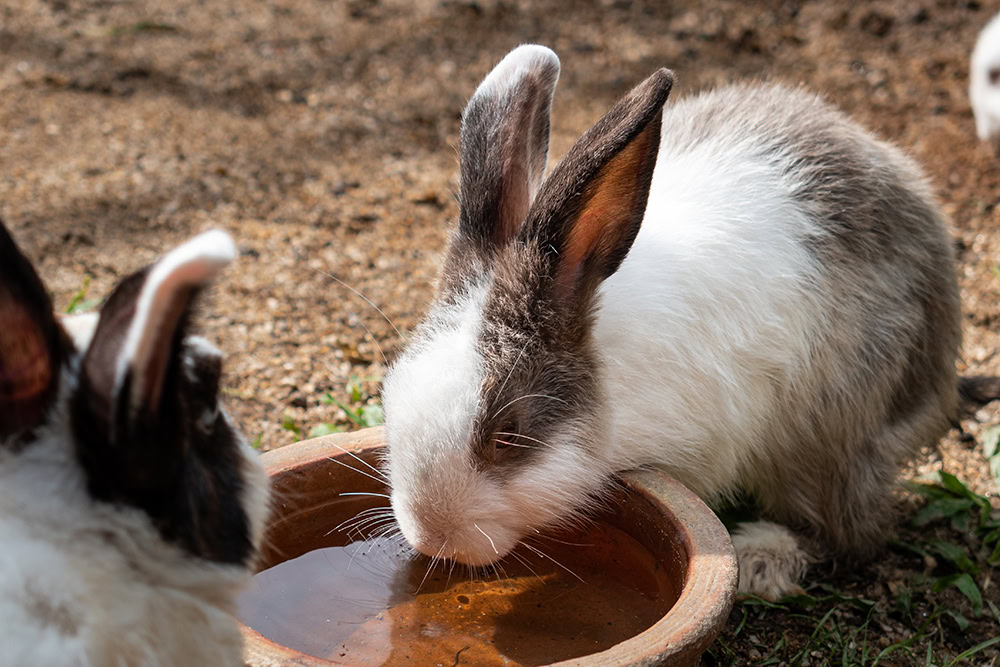VET APPROVED

The information is current and up-to-date in accordance with the latest veterinarian research.
Learn more »Click to Skip Ahead
With their stout little bodies and chubby cheeks, hamsters are an adorable part of the family of pocket-sized pets. These charming furballs come in different colors and sizes. Depending on the variety, a hamster will have an average length of 1.5 – 6 inches. For example, Roborovski hamsters are mini-sized and don’t exceed 3 inches in length, while Syrian hamsters typically reach 7 inches in length—which is the equivalent of four golf balls!
Read on to learn more about the typical sizes of hamster varieties that are commonly kept as pets, along with tips for keeping your rodent healthy!

Hamster Types Overview
The most popular types of hamsters in the U.S. are Syrian hamsters, Chinese hamsters, and Dwarf varieties. Let’s explore each one.
Syrian Hamsters (Mesocricetus aureus)
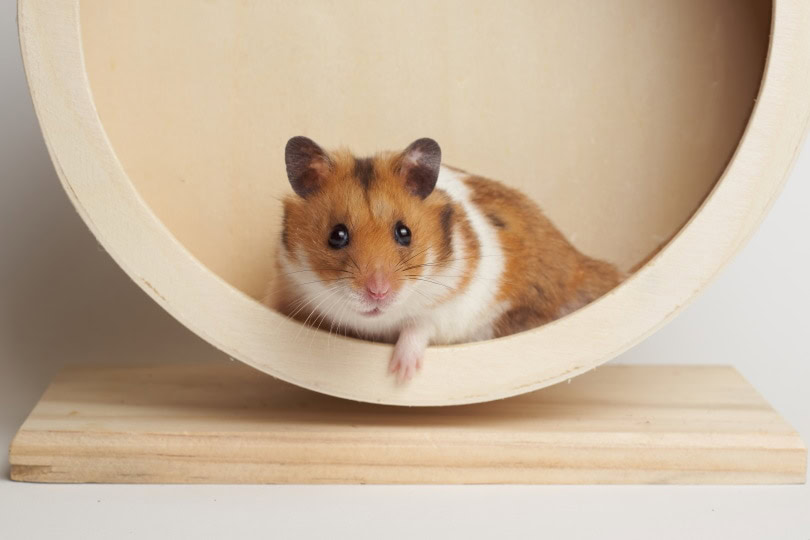
The Syrian hamster, also known as the Golden or Teddy Bear hamster, is undoubtedly the first image that comes to mind when you think of these little rodents. With their lovely faces, chubby bodies, and golden fur, these friendly hamsters are attractive choices as pets. However, due to their territorial nature, they do not like to share their enclosures and will fight if placed with another hamster.
They typically reach 6 to 8 inches in length and weigh between 3 and 5 ounces, making them an ideal size for handling, even by small children’s hands. However, they must be treated with gentleness and delicacy, as these animals can bite when they feel stressed or irritated!
Chinese Hamsters (Cricetulus griseus)
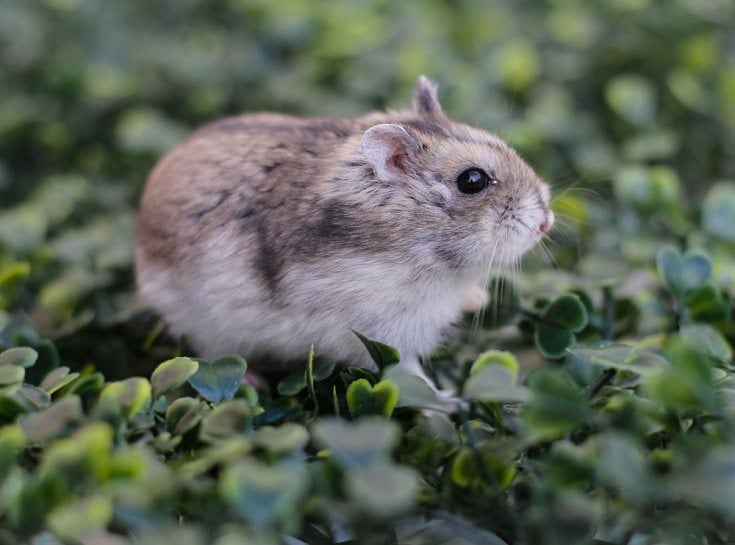
Aside from the black stripes on their backs and their soft black-and-gray fur, Chinese hamsters look a bit like smaller versions of Syrian hamsters. These cute, medium-sized rodents measure approximately 3.5 inches long and weigh between 1.3 and 1.6 ounces. Just like their golden counterparts, Chinese hamsters prefer to be left alone and may take a while to warm up to their human family.
Dwarf Hamsters
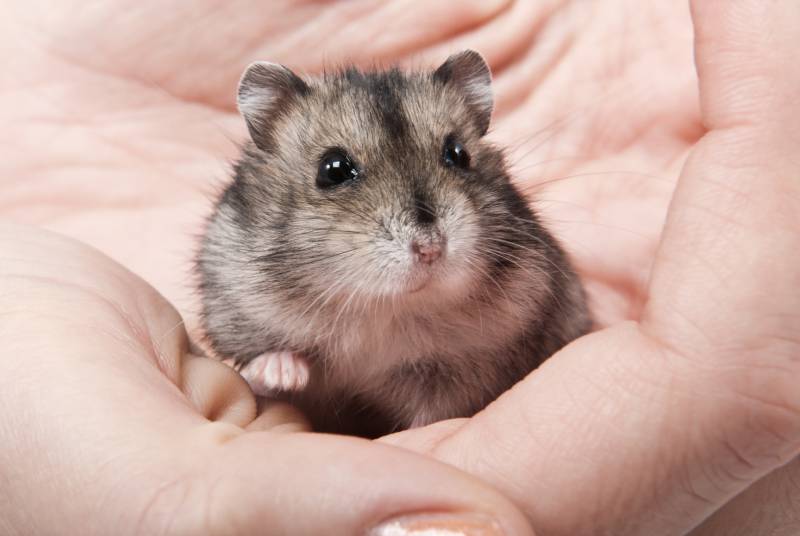
There are three popular varieties of dwarf hamsters: Roborovski (Phodopus roborovski), Campbell’s (Phodopus campbelli), and Winter White (Phodopus sungorus).
As their name suggests, Dwarf hamsters are smaller than Syrian and Chinese hamsters, typically measuring 1.5 to 4 inches in length and weighing between 0.7 and 1.6 ounces. While they may be cute and tiny, Dwarf hamsters are not ideal for handling because they tend to nip and bite. Their small size and fast movements also make them easy to drop, so they may not be the most appropriate pets for inexperienced owners or children.

Hamster Size and Growth Chart
Syrian hamsters typically reach 6 to 8 inches in length and weigh between 3 and 5 ounces, making them an ideal size for handling, even by small children’s hands. Chinese hamsters measure approximately 3.5 inches long on average and weigh between 1.3 and 1.6 ounces. As their name suggests, Dwarf hamsters are smaller than Syrian and Chinese hamsters, with the three varieties typically being between 1.5 and 4 inches in length and weighing between 0.7 and 2 ounces.
| Breed | Weight Range | Length Range |
| Syrian | 3–5 oz. | 6–8 in. |
| Chinese | 1.3–1.6 oz. | 3.2–5 in. |
| Roborovski Dwarf | 0.7–1 oz. | 1.5–3 in. |
| Campbell’s Dwarf | 1–2 oz. | 2–4 in. |
| Winter White Dwarf | 0.7–1.5 oz. | 3–4 in. |
When Does a Hamster Stop Growing?
It depends on the type, but most hamsters reach their adult size by 2–3 months of age. This timeframe may seem quite short, but sadly, these critters don’t have lengthy lifespans. Syrian, Roborovski dwarf, and Campbell’s dwarf hamsters can all live to be 5 years old if they’re well cared for, while Chinese and winter white dwarf hamsters typically reach 3 years of age. On the low end, the winter white dwarf hamster might only live to be 1 year old, while the others typically reach at least 2 years of age.
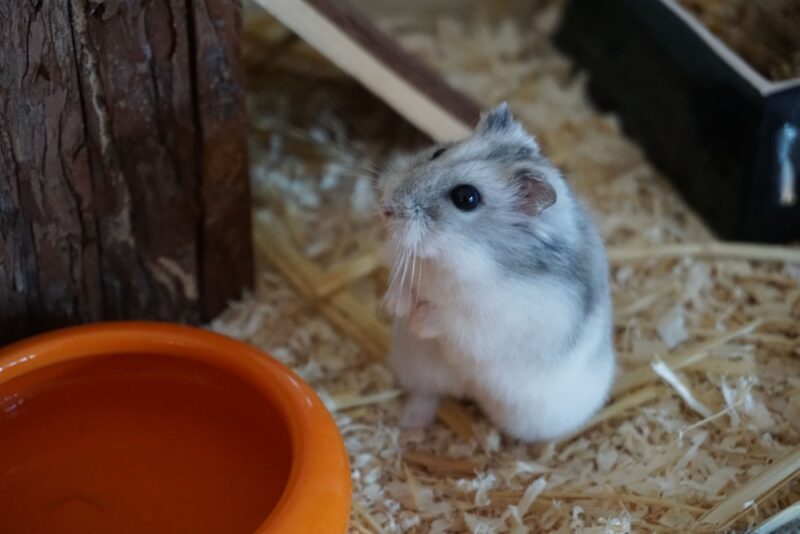
Factors Affecting the Size of a Hamster
The type of hamster is the most significant factor regarding their adult size. Syrian hamsters are the largest and dwarf hamsters are the smallest. That said, in any litter, there will be pups that are bigger or tinier than the others.
An individual hamster’s size can also be affected by their environment. They should feel safe and not be sickly or injured, and they should be able to get regular exercise, have enrichment opportunities, and be in an appropriately sized and clean habitat. Additionally, a hamster’s diet substantially affects how much they weigh. Being over- or under-weight can be dangerous for these rodents.
Ideal Diet for Maintaining a Healthy Weight
A crucial aspect of keeping your hamster in a healthy size range is providing them with a proper diet and exercise. The best food to give your pet every day is a commercial mix of hamster pellets, as these will have the essential vitamins and minerals that they need. They can also have timothy hay and rodent-safe veggies and grains several times a week, if not daily. In moderation, hamsters can have seeds, nuts, corn, fruits, mealworms, and crickets.
Here are a few other feeding tips:
- Skip the seeds. Hamsters aren’t necessarily picky eaters, but they do adore seeds, which can pose a problem for their waistlines due to the high fat and calorie content of that food. A seed-based diet can also lead to vitamin E deficiency.
- Go easy with the treats. As is the case for most pets, treats should make up less than 10% of the animal’s total daily intake. A few nuts or fresh vegetables or a whole-grain cracker can be given as occasional treats. You can also offer your hamster a small piece of fruit occasionally.
- Look under your hamster’s bed. Most pet hamsters retain their natural food-hoarding behavior. As a result, you might find little stashes of food strategically hidden in your pet’s enclosure. Make sure to clean the cage regularly, and remove any leftovers that could rot and/or contribute to weight gain in your little friend.
- Provide fresh water all day long. Just like any other pet, hamsters require a consistent supply of fresh water. Use a sipper bottle to prevent spills and keep the water untainted. Change the water daily to ensure that it remains free from contaminants.
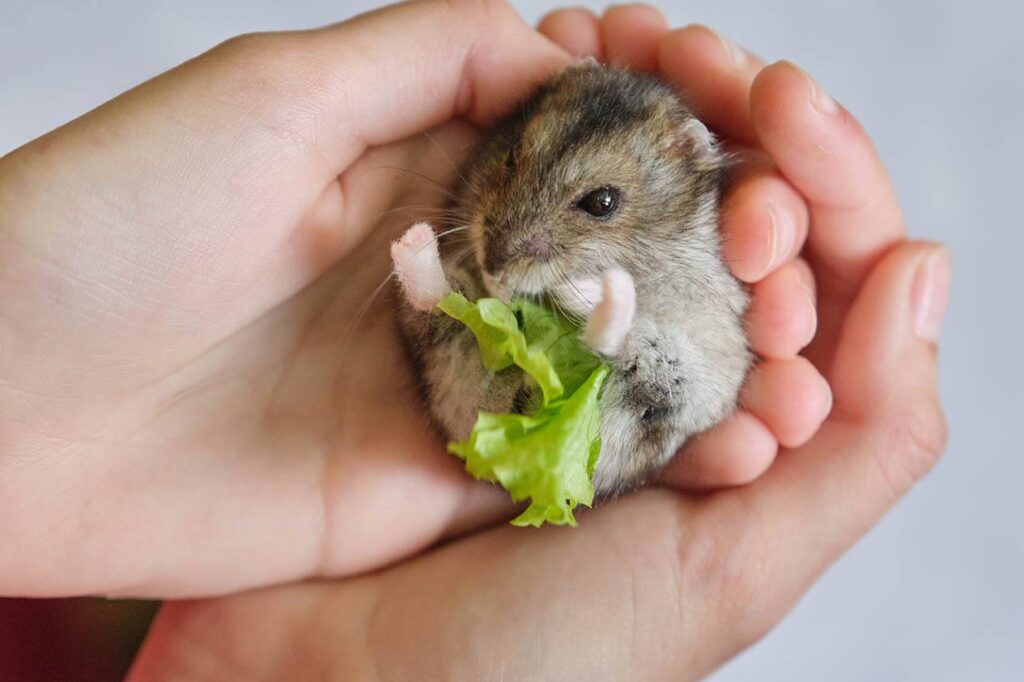
How to Measure Your Hamster
Hamsters are wiggly critters and don’t always like being handled, so measuring them can be tricky! Try to wait until your hamster is eating or relaxing, then take a soft measuring tape and stretch it from their nose to their tail to determine their length. You can also carefully pick them up, put them on a piece of graph paper, and count the squares.
It’s much easier to track your hamster’s weight. However, human-size scales won’t be sensitive enough for these rodents’ size, so get a food/kitchen scale that can measure in grams/ounces. (If you already have one, be sure to thoroughly sanitize it beforehand and afterward.) Gently put your hamster on the scale, either in a small container or by themselves if they’ll sit still. Be sure to reset the scale first if you’re using a container, then take note of your hamster’s weight.
Regularly recording your hamster’s size can help you monitor their overall health. If they’re still young and growing, they should consistently get longer and heavier. If your hamster is an adult and weighs less or more than they should for their type, you should consult your veterinarian to see if a diet change is required.

Conclusion
Pet hamsters vary significantly in size, though even the largest type, the Syrian hamster, won’t get bigger than 8 inches when fully grown. The feisty dwarf hamsters can be as tiny as 1 ½ inches and thus prefer to be observed from afar rather than handled frequently. Chinese hamsters split the difference, typically being 3–4 inches.
These rodents typically stop growing when they’re about 3 months of age and have average lifespans of 1–5 years, depending on the type. You can help your little critter grow up strong and healthy and live as long as possible by giving them a nutritious pellet-based diet, occasionally supplemented with hamster-safe treats like nuts, fruits, and insects.
- https://lafeber.com/vet/basic-information-for-hamsters/
- https://www.pdsa.org.uk/pet-help-and-advice/looking-after-your-pet/small-pets/is-a-hamster-the-right-pet-for-you
- https://pdf.sciencedirectassets.com/
- https://www.petmd.com/exotic/nutrition/evr_ex_hm_what-can-hamsters-eat
- https://www.hepper.com/how-big-can-a-hamster-get/
Featured Image Credit: Maros Bauer, Shutterstock








